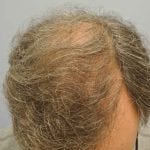Are big hair transplant sessions aka Mega Sessions safe
Originally Published on Feller Medical

What Are Mega Sessions in Hair Transplants?
A Mega session is a surgical hair transplant procedure in which a large number of grafts are implanted in one session.
The goal of a mega session is to transplant as many follicles as possible in a single session and, because mega sessions usually cover a large area in one go, they are less likely to require subsequent sessions.
FUT: This method involves the removal of a strip of skin from the scalp also known as the donor area; the follicular units are extracted from the strip, and the collected follicular units are placed in the recipient zone.
FUE: Follicular units (composed of 2–3 hairs each) are individually excised from the donor area and then implanted individually into the balding area.
The Appeal of Mega Sessions
There are several reasons why patients and doctors may opt for mega sessions:
Convenience: It might be better to have one long session rather than continuing to come in for multiple short ones. There will be fewer surgeries, less anesthesia required, and shorter total recovery times.
Quicker Results: Many patients are anxious about results, and mega sessions may provide a quicker recovery and results over multiple smaller procedures.
Price: Even though the upfront cost is higher for a mega session, over smaller procedures, the price could still end up being less in the long run. In other words, the expense per surgery, if you end up needing multiple ones, plus the costs of hospitalization and time off work, might still cost less.
Are Mega Sessions Safe?
If the mega session is performed by an experienced surgeon, if the recipient is healthy, and if the grafts are placed efficiently, then it’s generally safe. However, more anesthesia and the large number of incisions required for a mega session bring a greater risk of infection and complications.
Longer Surgery Time and Fatigue
One of the biggest things to consider with mega sessions is the duration. The typical mega session is 8–12 hours or more. This extended surgery presents multiple physiological and psychological stresses to surgeon and patient alike.
The longer the operation lasts, the longer the local anesthetic has been present in the patient. Local anesthesia is perfectly safe — but the longer local anesthetic is inside us, the greater the risk of complications from swelling, soreness and, in extreme instances, anesthetic toxicity.
Risk of Graft Dehydration
With each individual hair graft, it is important that the follicles remain moist (and viable) for the duration of a mega session, which may take several thousands grafts to complete.
The more grafts, the longer they’re outside the body. If not cared for and hydrated, they can become damaged or dehydrated — compromising the quality of follicles. In extreme cases, hair grafts can die. Dehydrated grafts can lead to higher failure rates, resulting in less density at the end.
Donor Area Depletion
Once extracted, the grafts are sorted and placed into one of the transplantation stations according to their orientation of the head. The follicles are taken from the donor area on the scalp in the back, sides (or sometimes a combination of the two). Because there is need for a larger number of grafts in a mega session, it is easy to over-harvest the donor area if too many follicles are taken at once. This can result in donor area being thinned out — or having areas going bald.
Overharvesting might also make future hair transplants unlikely if no healthy follicles are left intact from which to conduct follow-up procedures.
Increased Risk of Scarring
In FUT mega sessions, this can increase the risk the linear scarring being more visible even after recovery; in FUE, the more grafts taken in one sitting, the increased number of visible punch scars. In either type of surgery, taking large numbers of grafts in one session will increase total trauma to the scalp, and so the resulting amount of scarring will vary.
Postoperative Complications
Mega sessions also come with a higher likelihood of postoperative complications.
These can include:
Infection: When you have more surface area, more incisions, a stronger risk of infection must be taken into account.
Swelling: There may be more swelling from this mega session, and it will last longer than from a typical session. Also, the swelling from the mega session will last 2–3 days, which may be uncomfortable for the patient.
Shock Loss: Sometimes large-scale transplants can create ‘shock loss’ of the grafted area — this is almost always temporary, lasts a few days to a few weeks, then the hair usually regrows. However, this type of shock loss is common, but can be a real buzzkill for some patients.
Graft Survival Rates
The donor grafts are the most crucial element in the successful hair transplant and the more grafts you have to deal with, the greater your chances that some do not survive, due to some portion of them being dehydrated, handled too roughly, poorly dissected, or placed without a sufficient blood supply.
Graft survival relies on the speed of an experienced surgical team who must also be able to provide the graft with the perfect conditions as soon as it is implanted.
Who is an Ideal Candidate for a Mega Session?
Read Full Article: Are big hair transplant sessions aka Mega Sessions safe



Comments
Post a Comment